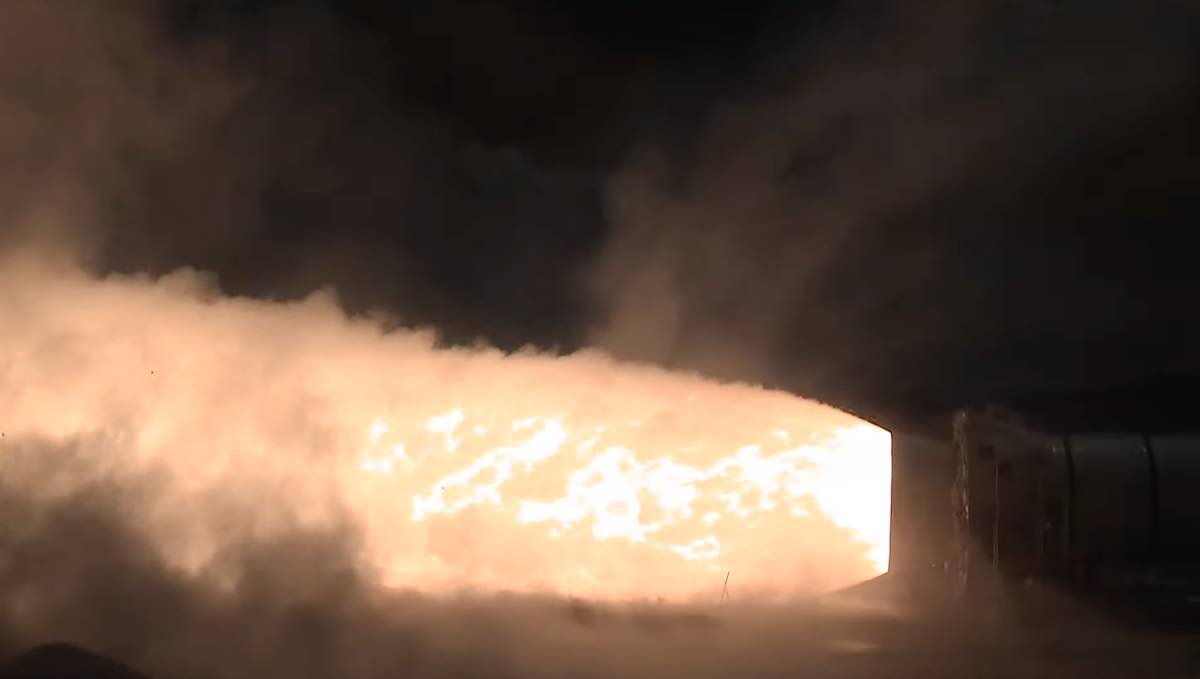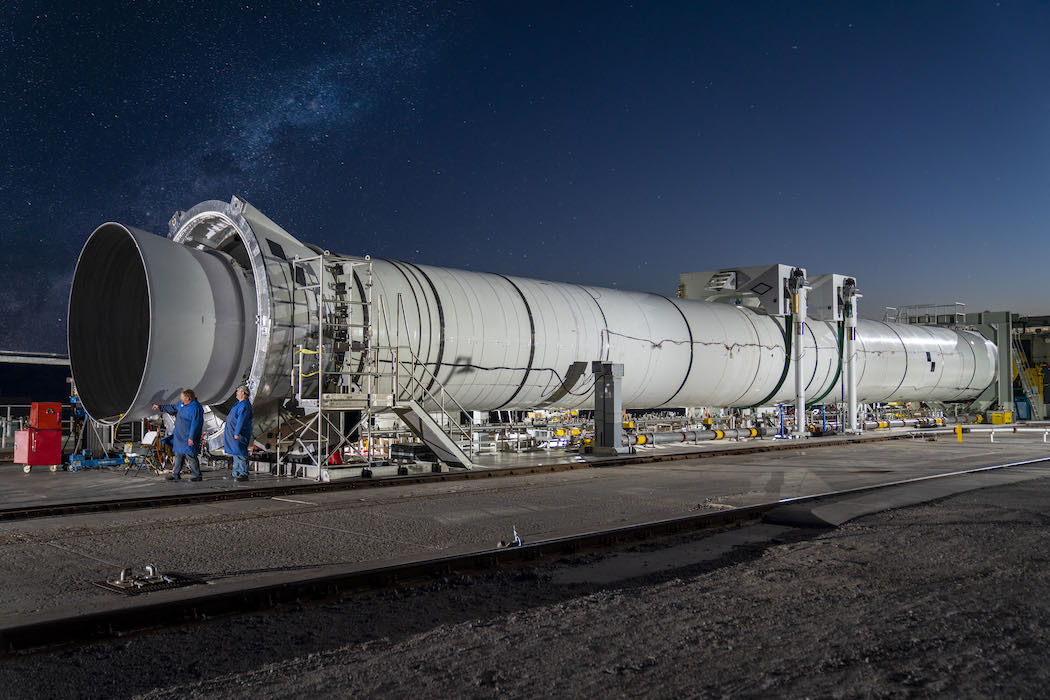Space News & Blog Articles
SLS moon rocket booster test-fired in Utah
 A test article for NASA’s Space Launch System’s solid rocket booster fired for more than two minutes Thursday on a test stand in Utah. Credit: NASA TV / Spaceflight Now
A test article for NASA’s Space Launch System’s solid rocket booster fired for more than two minutes Thursday on a test stand in Utah. Credit: NASA TV / Spaceflight Now
Northrop Grumman ignited a full-scale booster for NASA’s Space Launch System Thursday on a hillside firing stand in Utah, completing a two-minute test designed to demonstrate a new motor ignitor and steering system for use on future versions of the giant moon rocket.
The test began with the firing command at 4:01 p.m. EDT (2:01 p.m. MDT; 2001 GMT) at Northrop Grumman’s booster manufacturing, fueling, and test facility at Promontory, Utah.
The Flight Support Booster, or FSB-2, test was designed to help engineers evaluate new materials, processes and improvements for upgraded solid rocket boosters that will power future versions of NASA’s Space Launch System heavy-lift rocket.
The main objectives Thursday included gathering data on the performance of a new thrust vector control system that would be used to steer the rocket in flight. The FSB-2 test was also expected to demonstrate a newly qualified motor ignition system qualify a new nozzle phenolic ablative solvent material, according to Northrop Grumman.
The SLS moon rocket is a central element of NASA’s Artemis program, which aims to return humans to the moon later this decade.
“The motor burned for 126 seconds, which is how long it will power the Artemis rockets during liftoff and early flight. And it was a great test,” said Julia Khodabandeh, motor team lead for the SLS boosters at NASA’s Marshall Space Flight Center in Huntsville, Alabama.
Ignition!
NASA’s Flight Support Booster-2 test-firing is underway in Utah to test new systems for the Space Launch System solid rocket booster.https://t.co/TNDjCtnD1k pic.twitter.com/QMtqexsJWn
— Spaceflight Now (@SpaceflightNow) July 21, 2022
Positioned horizontally in a test stand for the hotfire test Thursday, the 154-foot-long booster generated about 3.6 million pounds at maximum power. The five-segment booster is an extended version of the solid rocket motor that flew on the space shuttle.
The temperature of the rocket motor’s exhaust reached about 3,700 degrees Fahrenheit — hotter than 2,000 degrees Celsius — as it exited the nozzle cone at the rear of the booster.
The boosters for the first three SLS missions are either built or in production, and NASA and Northrop Grumman have booster sections left over from the space shuttle program for eight SLS flights. The booster segments were reused during the shuttle program, but will be discarded after each SLS mission.
Some of the rocket motor’s design changes tested Thursday could be introduced beginning with the ninth SLS flight, officials said.
“The current SLS boosters for the first eight Artemis missions are using a robust mix of new avionics and substantial heritage hardware from the Space Shuttle Program,” said Bruce Tiller, NASA’s SLS booster program manager at Marshall, in a statement before the FSB-2 hotfire test. “This particular ground test will demonstrate some new materials, a completely new steering system, and a new way to ignite the motor. Data from this test will improve our booster design for future missions that take us farther into deep space than ever before.”
 The SLS Flight Support Booster-2 test article. Credit: Northrop Grumman
The SLS Flight Support Booster-2 test article. Credit: Northrop Grumman
The solid-fueled boosters will generate about 75% of the 8.8 million pounds of thrust for each SLS mission. The first SLS test flight, called Artemis 1, is scheduled for launch from NASA’s Kennedy Space Center in Florida no earlier than Aug. 29.
Aside from testing new materials, the test-firing Thursday also provided another opportunity to evaluate the motor’s manufacturing and performance ahead of the first SLS test launch later this summer.
Northrop Grumman, through its precursor company Orbital ATK, had conducted six previous test-firings of the five-segment SLS booster since 2009, including two developmental motors and two full-size qualification units to certify the booster design is ready for flight.
During a Flight Support Booster test in 2020, FSB-1, tested the performance of an aluminum powder fuel procured from a new supplier. The rocket motor consumes the aluminum powder in combination with ammonium perchlorate. The two chemicals are mixed in epoxy resin, which cures with a rigidness of a pencil eraser and remains stable until the rocket is ignited.
The FSB-1 motor test also tested new materials in the booster nozzle.
This email address is being protected from spambots. You need JavaScript enabled to view it. the author.
Follow Stephen Clark on Twitter: @StephenClark1.
When you subscribe to the SpaceZE News Feed, we will send you an e-mail when there are new updates on the site so you wouldn't miss them.

